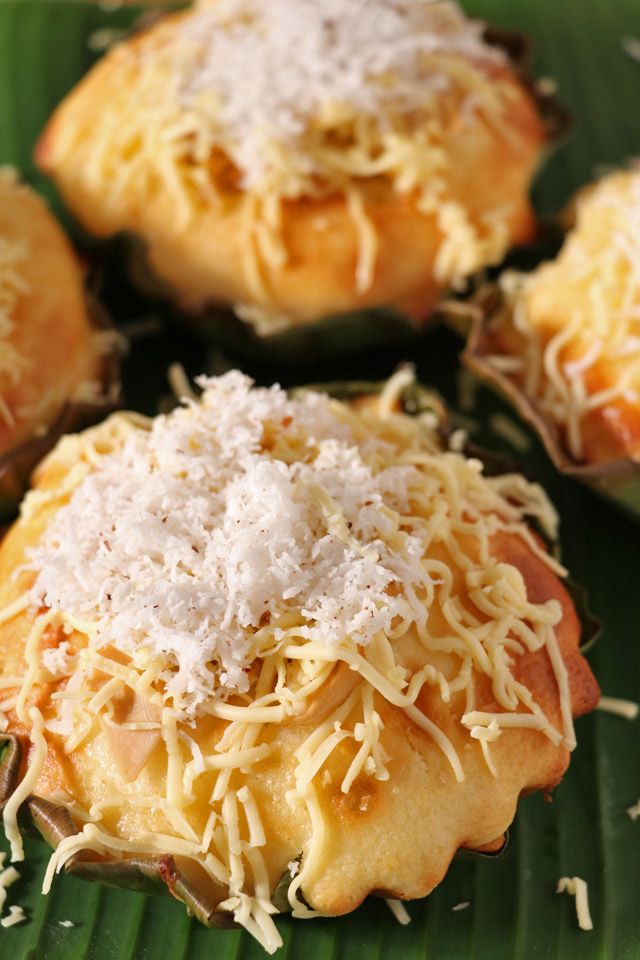
Bibingka is a traditional Filipino dessert that is made from rice, usually glutinous rice or rice flour is used. It is characterized by having a spongy texture and a slightly sweet flavor, in addition to its distinctive aroma that comes from the banana leaves in which it is cooked.
The origin of this dessert has roots in the pre-colonial traditions of the indigenous people of the Philippines. However, the influence of trade with other Southeast Asian cultures, as well as the introduction of Christianity by Spanish colonizers, helped shape the version of bibingka we know today. Historically, it was prepared during the Christmas and Unda season, especially during Mass novenas (Simbang Gabi), and other important festivals.
While bibingka can be enjoyed any time of the year, it is particularly popular during the Christmas season in the Philippines. It is common to find it in Christmas markets and fairs, as well as in Simbang Gabi celebrations, where Filipinos attend masses in the morning. In addition, it is a typically festive food, consumed on special occasions, such as weddings and parties.
This dessert is usually served hot and can be covered with butter or margarine and sprinkled with sugar and cheese, and sometimes even with grated coconut, depending on preference. It can also be found decorated with slices of hard-boiled egg or pieces of cheese, depending on the region.
It can be eaten with a spoon or simply with your hands. It is cut into portions, and diners can enjoy it alone or with the accompaniments of their choice.
There are different variations of bibingka in the Asian country that, as we said previously, vary depending on the region. Some versions may include ingredients like dried fruits, nuts, or even flavors like pandan. In some areas, bibingka is served with specific sauces or accompaniments typical of the local culture.
How to prepare bibingka at home
Ingredients
- 1 cup rice flour
- 1/2 cup sugar
- 1 teaspoon baking powder
- 1/4 teaspoon salt
- 1 1/2 cups coconut milk
- 1/4 cup water
- 2 eggs
- Banana leaves (optional, to line the mold)
- Butter or margarine (spread)
- Sugar (for sprinkling)
- Cheese (vacuum cheese or fresh cheese, sliced, optional)
- Hard-boiled egg (sliced, optional)
1. Prepare the banana leaves (optional)
- If you decide to use banana leaves, cut pieces about 10 x 10 inches. You can quickly pass them through the flame of the stove to make them more flexible and then line a mold or bibingka mold with them.
2. Mix the dry ingredients
- In a large bowl, mix the rice flour, sugar, baking powder and salt.
3. Whisk the wet ingredients
- In another bowl, beat the eggs, then add the coconut milk and water. Mix well.
4. Combine the mixtures
- Pour the liquid mixture into the dry ingredients and mix until well combined and smooth.
5. Prepare the mold
- Preheat oven to 350°F (175°C). If you are using a mold, spread a little butter on the bottom and sides. If you use banana leaves, make sure they are well placed in the mold.
6. Bake
- Pour the mixture into the prepared mold. If desired, place slices of cheese and hard-boiled egg on top. Bake for about 30-40 minutes or until golden brown on top and a toothpick inserted into the center comes out clean.
7. Serve
- Once cooked, remove the bibingka from the oven and let it cool slightly. Spread butter or margarine on top, sprinkle with a little sugar and serve hot.
Tips
- You can experiment with additional flavors, like vanilla extract or pandan, for a little something special.
- Bibingka can be enjoyed alone or with accompaniments such as grated coconut, more sugar, or even a coconut milk sauce.

Source: https://reporteasia.com/cultura/cocina-asiatica/2024/11/02/bibingka-postre-festivo-clasico-filipinas/


